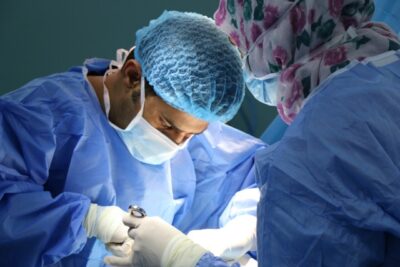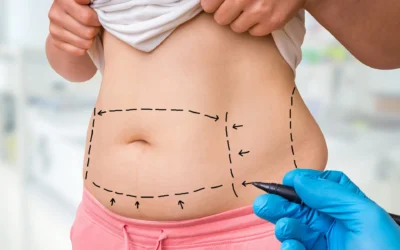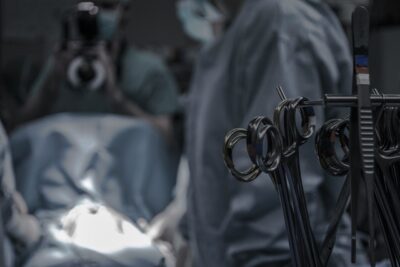
Today, obesity is no longer just a cosmetic concern; it has become one of the most significant health challenges globally. Many individuals who haven’t achieved results through traditional methods like diet and exercise are turning to medical options for weight loss. Bariatric surgeries are among the most effective tools on this journey—a tool that, relying on modern science, has transformed thousands of lives.
In this article, we will introduce you to the most common weight loss surgeries, their advantages, disadvantages, and applications, so you can make an informed decision based on a comprehensive understanding.
Key Questions Before Bariatric Surgery
What are the types of bariatric surgery? Methods such as sleeve gastrectomy, gastric bypass, gastric balloon, gastric Botox, adjustable gastric banding, and biliopancreatic diversion are among the most common procedures. Alongside these, non-surgical techniques like liposuction, lipomatic, CoolSculpting, and abdominoplasty are also available, primarily used for body contouring.
Do weight loss surgeries have complications? Yes, like any medical intervention, these procedures are not without risks. Problems such as nausea, malabsorption of nutrients, vitamin deficiencies, gallstones, and dumping syndrome can be among the complications, especially if post-operative care is not taken seriously. (Choosing a qualified surgeon and a reputable medical center plays a vital role in reducing these risks.)
Who are suitable candidates for bariatric surgery? Individuals with a BMI over 35 who have tried other weight loss methods are typically good candidates for these types of surgeries9. Sometimes, individuals with a lower BMI may also be approved by a doctor for surgery if they have co-existing conditions.
Types of Weight Loss Surgeries
Sleeve Gastrectomy: Reducing Stomach Volume to Control Appetite
In this procedure, about 75% to 80% of the stomach is removed, and the remaining part resembles a narrow tube or a “banana”11. The stomach volume is drastically reduced, resulting in decreased appetite and food intake capacity12.
-
- Advantages: Significant weight loss, performed laparoscopically (minimally invasive).
- Disadvantages: Irreversible, potential for changes in digestive hormones.
Gastric Bypass: Rerouting the Calorie Absorption Path
In this method, the stomach is divided into two parts, and the small intestine is connected to the upper part of the stomach15. Ingested food bypasses most of the stomach and intestine, leading to less calorie absorption16.
-
- Advantages: Rapid effect on weight loss, suitable for individuals with severe obesity.
Disadvantages: Complex procedure, requires lifelong supplement intake.
-
Gastric Banding (Adjustable Gastric Band): Limiting Stomach Capacity
By placing an adjustable silicone band around the upper part of the stomach, its capacity is reduced19. This decreases the amount of food consumed, and the individual feels full sooner20.
-
- Advantages: Minimally invasive, adjustable.
- Disadvantages: Potential for band slippage, less effective results compared to other methods in the long term.
Gastric Balloon: Occupying Space Without Surgery
A saline-filled silicone balloon is placed inside the stomach endoscopically, occupying space23. This method is temporary (about 6 months) and does not require surgery24.
-
- Advantages: Outpatient procedure, no surgical incision.
- Disadvantages: Limited duration of effect, nausea in the first few days.

Gastric Botox: Slowing Down Stomach Movement
Injecting botulinum toxin (Botox) into the stomach muscles slows down its movement, causing food to empty later27. Consequently, the individual feels full for a longer period. This method is non-invasive and performed via endoscopy28.
-
- Advantages: Quick, no general anesthesia required.
- Disadvantages: Temporary effect (4 to 6 months), limited weight loss compared to surgeries.
Biliopancreatic Diversion: A Complex Procedure for Morbid Obesity
This is a complex, combined method that both reduces stomach volume and alters the path of nutrient absorption31. Weight loss with this method is significant, but it is typically only used for cases of morbid obesity32.
-
- Advantages: Most effective for severe weight loss.
- Disadvantages: Higher risk, high probability of nutritional deficiencies and requires special care.

Body Contouring Procedures: An Option for Body Shaping
For those who are primarily looking for body shaping or do not have a very high excess weight, the following methods are more suitable:
- Liposuction: Localized fat is removed by suction. This method is suitable for individuals with normal weight who have accumulated fat in specific areas.
- Risks: Infection, swelling, unevenness.
- Abdominoplasty (Tummy Tuck): Removing Excess Abdominal Skin and Fat
Excess skin and fat are removed from the abdomen, and abdominal muscles are tightened39. This procedure is ideal for mothers or individuals who have loose abdominal skin after significant weight loss40.
-
- Risks: Significant scarring (incision line), long recovery period.
- CoolSculpting: Freezing Fat with Cold Technology
Using cold technology, fat cells are frozen and destroyed, which are gradually eliminated by the body42. This is a non-invasive method for gentle body contouring43.
-
- Advantages: Non-surgical, no need for incisions or anesthesia.
- Disadvantages: Gradual effect, requires multiple treatment sessions.
- Lipomatic: Fat Removal with Vibration and Suction
Fat is removed from the body using vibration and suction46. This method is more modern than traditional liposuction and usually has a shorter recovery period47.
-
- Risks: Bruising, potential unevenness, possible need for future revisions.

Conclusion: Surgery is Not the End; It’s the Beginning
Bariatric surgery or body contouring can be a stepping stone towards better health and increased self-confidence, but it is never an overnight miracle. True and lasting success begins when an individual changes their lifestyle permanently—from healthy eating and regular physical activity to sleep management and a positive mindset.
Before taking any action, consult with a specialist doctor. Understand your options correctly and make your decision based solely on factual and expert information. Your health is the priority.








No comment